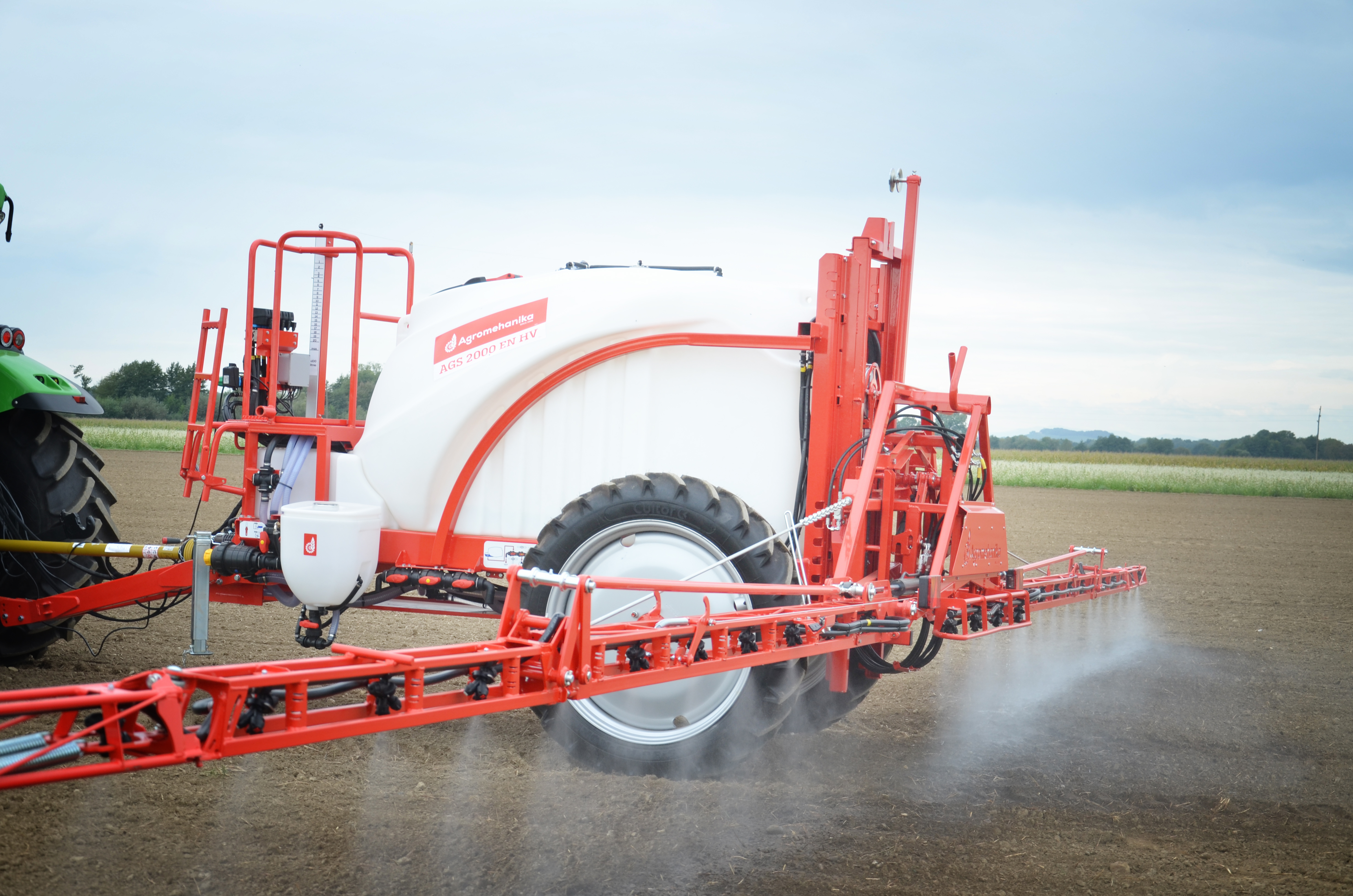Optimizing your sprayer settings will enhance the efficiency of the pesticides used, reduce spray drift, and maintain the machine in good condition. Regular maintenance will ensure that your sprayer operates flawlessly, saving you both time and money.
If time allows and you want to be completely confident in the operation of your machine, always test your sprayer with clean water before each spraying.
Below are the vital components of the sprayer that require special attention from the user before each spraying:
PUMP
Regularly check the oil level and top it up as needed. Do not exceed the maximum oil level. Changing the pressure membranes is recommended every 300 working hours. Correct air pressure in the venturi ensures stable working pressure. Set the venturi pressure to at least 1/3 of the working pressure. Under no circumstances should the venturi pressure exceed the working pressure.
SPRAYING ASSEMBLY
Visually inspect the spraying and hydraulic hoses. Replace or seal them as needed. Lubricating movable parts with grease is recommended. Check the operation and setting of all hydraulic cylinders. Pay special attention to the cylinder that allows the assembly to return to the working position. It should do so very quickly. In most cases, the distance of the assembly (distance from the nozzles) from the ground is set to 50 cm.
NOZZLE CONTROL
Nozzles must be clean above all. They can be cleaned with an appropriate plastic brush. Then measure the nozzle flow rate (l/min) with a measuring gauge and under certain pressure. The test is conducted with clean water. Compare the result with the nozzle table. If the measurement results deviate from the table results by more than 10%, we recommend replacing the nozzle inserts. Set or use appropriate nozzles based on your hectare consumption (l/ha), working speed, type of spray, and plot size. Numerous free "online calculators" or nozzle tables on sprayers enable you to select suitable nozzles. We recommend the "Lechler calculator" and the "nozzle calculator".
FILTERS
Special attention should be paid to the suction and pressure filters each time. Often, due to dirty filters, pump damage occurs.
MANOMETER
The manometer is also very important during spraying. This small device for pressure regulation has a strong influence on spray consumption, so its precise adjustment is very important.
By following the above tips, your sprayer will operate flawlessly, ensuring the health of you and the environment in which we live. Additionally, you will save both time and money.
Check out spraying techniques on our website.



